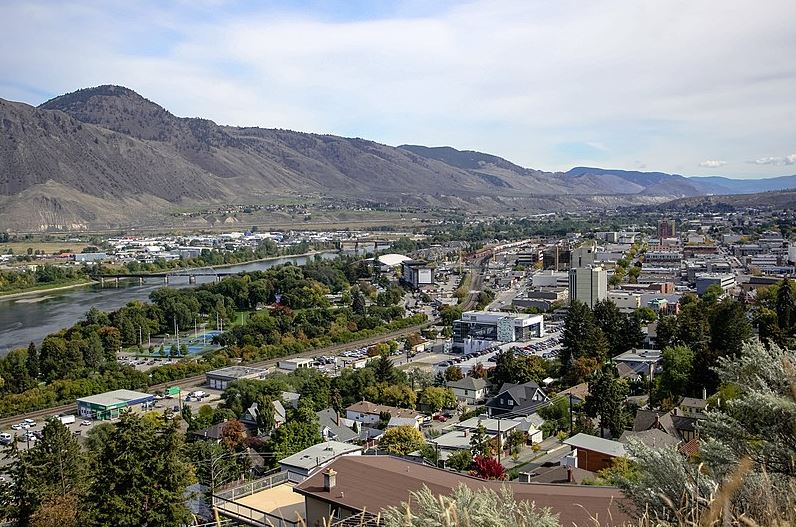Kamloops, nestled in the heart of British Columbia, is renowned for its picturesque landscapes, vibrant community, and wealth of recreational opportunities. With a population of just over 100,000, it strikes a balance between small-town charm and urban amenities. However, living in Kamloops comes with both benefits and drawbacks. Here’s an in-depth look at the pros and cons of calling Kamloops home:

Pros of Living in Kamloops
Below are the pros of living in Kamloops:
1. Natural Beauty and Outdoor Activities
Kamloops is a paradise for nature lovers and outdoor enthusiasts. Surrounded by mountains, rivers, and lakes, the city offers countless opportunities for outdoor activities. Residents can indulge in hiking, biking, fishing, skiing, golfing, and more. The area boasts over 2,000 hours of sunshine annually, making it easy to enjoy the great outdoors. Notable spots include Kenna Cartwright Park, the largest municipal park in British Columbia, and Sun Peaks Resort, a premier ski destination.
2. Mild Climate
Kamloops enjoys a semi-arid climate, characterized by mild winters and warm summers. Winter temperatures average around -5°C, which is relatively mild compared to other Canadian cities. Summers are hot and dry, with temperatures often reaching 30°C or higher. This pleasant weather allows for year-round outdoor activities and contributes to a high quality of life.
3. Affordable Cost of Living
One of the most significant advantages of living in Kamloops is the lower cost of living compared to major urban centers like Vancouver or Toronto. Housing is notably more affordable, with a variety of options ranging from apartments to single-family homes. Additionally, everyday expenses such as groceries, utilities, and transportation are reasonably priced, making it easier for residents to manage their finances and enjoy a comfortable lifestyle.
4. Community and Lifestyle
Kamloops is known for its friendly, welcoming community and strong sense of local pride. The city hosts numerous cultural and recreational events throughout the year, fostering a vibrant community spirit. Popular events include the Kamloops Farmers’ Market, the Kamloops International Buskers Festival, and Ribfest. These activities provide ample opportunities for socializing and building connections with fellow residents.
5. Educational Opportunities
Kamloops is home to Thompson Rivers University (TRU), which offers a wide range of undergraduate and graduate programs. TRU attracts students from across Canada and around the world, contributing to a diverse and dynamic community. The university also provides lifelong learning opportunities for residents, including continuing education courses and professional development programs.
6. Healthcare Facilities
Kamloops has well-equipped healthcare facilities, including the Royal Inland Hospital, which offers a range of medical services and specialties. Access to quality healthcare is a crucial factor for many families and retirees, and Kamloops delivers with its comprehensive medical infrastructure.
Cons of Living in Kamloops
Here are some of the cons of living in Kamloops:
1. Limited Job Market
While Kamloops offers employment opportunities in sectors such as education, healthcare, retail, and tourism, the job market can be limited compared to larger cities. High-paying jobs in specialized fields may be harder to find, which can be a drawback for professionals seeking career advancement. Many residents may need to commute or relocate for better job prospects.
2. Transportation and Connectivity
Public transportation in Kamloops is not as extensive as in larger metropolitan areas. While the city has a public transit system, it may not be as convenient or efficient for everyone, especially those living in outlying areas. Additionally, Kamloops does not have a major international airport, so residents often need to travel to Vancouver or Calgary for international flights.
3. Limited Cultural Amenities
Although Kamloops has a vibrant local arts scene and hosts various cultural events, it lacks some of the amenities found in larger cities, such as major museums, theaters, and a wide variety of dining and shopping options. For those who thrive on a bustling urban lifestyle with access to a broad range of cultural experiences, this can be a significant drawback.
4. Wildfire Risk
The region around Kamloops is prone to wildfires, especially during the hot, dry summer months. This can pose a risk to property and health, as smoke from wildfires can lead to poor air quality. Residents need to be prepared for potential evacuations and have plans in place to protect their homes and families.
5. Isolation from Major Urban Centers
While Kamloops offers many amenities, it is somewhat isolated from major urban centers. The nearest big city, Vancouver, is about a 3.5-hour drive away. This distance can be a drawback for those who frequently travel for business or pleasure, or who seek the diverse opportunities that larger cities provide.
Conclusion
Living in Kamloops City offers a high quality of life with its natural beauty, mild climate, affordable living, and strong community spirit. However, the limited job market, transportation challenges, and risk of wildfires are important considerations. Whether Kamloops is the right place to live depends on individual preferences and priorities. For those who value outdoor activities and a tight-knit community, Kamloops can be an ideal choice.



